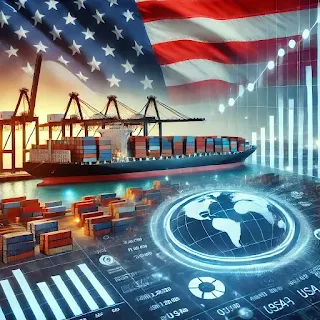Trump's Tariff Strategy – What Was It Really For? - 2025
Trump's Tariff Strategy – What Was It Really For?
“Can tariffs really make America great again?”
The tariff policy implemented during former President Trump's term wasn't just an economic lever—it was a strategy aimed at reshaping global trade, empowering domestic industries, and minimizing trade deficits. But behind this bold move were also significant side effects and risks.
1️⃣ Why Were Tariffs Introduced?
The goals of the tariff strategy were focused and ambitious:
- ✔️ Boost competitiveness of American-made products over imports
- ✔️ Shrink the trade deficit (especially with China)
- ✔️ Bring back manufacturing jobs to the U.S.
2️⃣ Risks You Shouldn't Ignore
| Impact Area | Potential Side Effect |
|---|---|
| Consumers | Rising prices (due to import costs) |
| Manufacturers | Higher input costs → Lower profit margins |
| Global Trade | Risk of retaliatory tariffs, disrupted supply chains |
3️⃣ My Personal Experience – It Felt Familiar
I once worked for a U.S.-based manufacturing company during a time of trade friction. We were initially thrilled—orders surged locally. But a year later, our European and Asian clients pulled out due to price hikes, and even U.S. consumers started saying, “It’s just too expensive.”
4️⃣ Looking Ahead – What’s the Outlook?
- 📉 Short-term boost in some protected industries
- 📈 Long-term risks to trust in U.S. trade partnerships
- 🌍 Increased urgency to diversify global supply chains
5️⃣ The Numbers Tell a Story
| Metric | Before Tariffs | After Tariffs |
|---|---|---|
| U.S. Trade Deficit with China | $375B (2017) | $311B (2019) |
| Steel Industry Jobs | 142,000 | 153,000 |
| U.S. Consumer Price Index (CPI) | +1.8% | +2.5% |
📌 Final Thoughts
Tariffs are undeniably powerful. But like any sharp tool, they cut both ways.
They can revive domestic industries, yes—but they can also strain international trust and spark trade retaliation.
What I learned from observing it up close: the policy must evolve.
The future requires smarter, more adaptive strategies that protect growth without isolating allies.
※ This article is intended to provide a neutral overview of trade policy impacts. It does not endorse or criticize any political figure or government directly.



